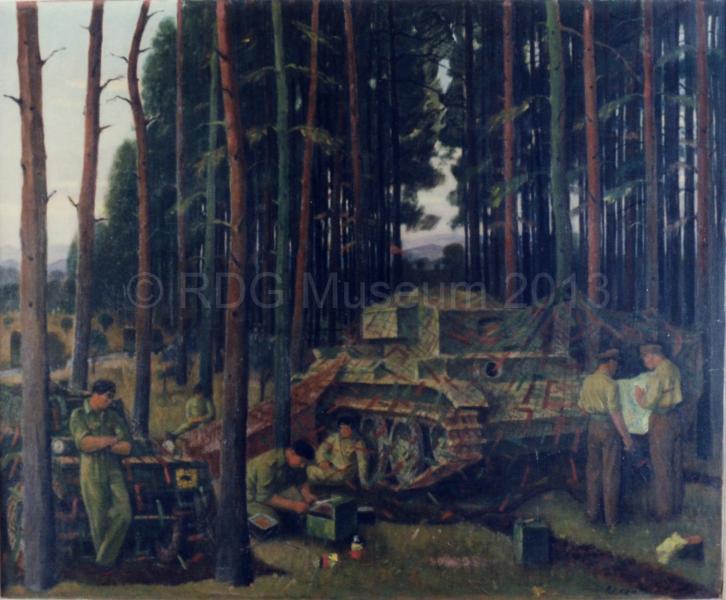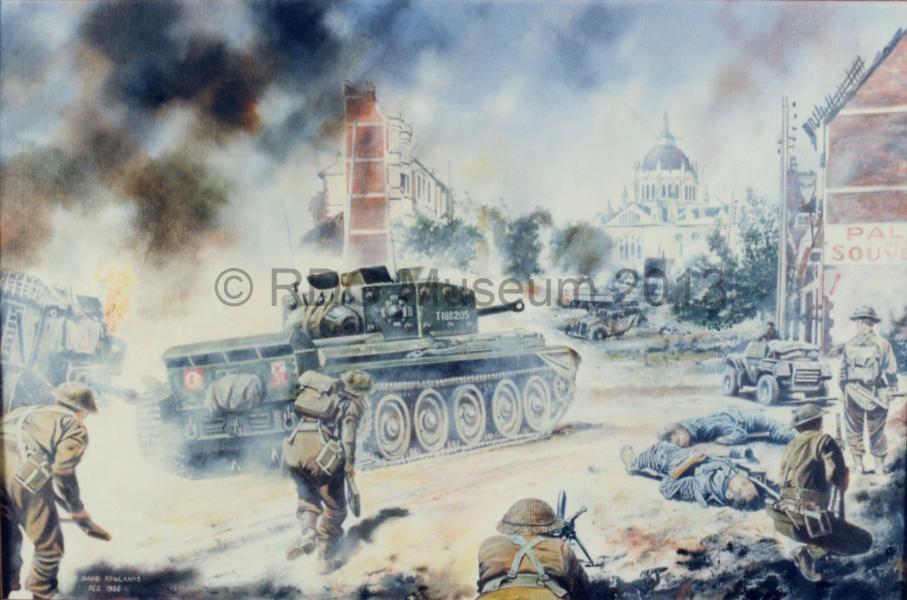

The Cruiser Tank A27 specification, drawn up in 1940, was intended to provide the successor to the anticipated A15 Cruiser Tank, known as the Crusader. While the Crusader was not yet in production, it was obvious that it would eventually become obsolete. The new specification therefore called for improvements in all three key areas: mobility, protection, and firepower. It was expected that it would enter service in 1942; in fact, the new tank was beset by troubles, and did not enter combat until the Normandy campaign in 1944.
Following a protracted development process, the new tank eventually emerged in two forms: the Liberty-engined Centaur and the Meteor-engined Cromwell. Both were virtually identical in all respects, save their powerplant: while the Centaur carried the Liberty V-12, an aero engine of First World War vintage, the Cromwell was powered by the far more powerful and reliable Rolls-Royce Meteor, derived from the famous Merlin engine that powered the Hurricane, Spitfire and Lancaster. This made it far more mobile than the Centaur, able to achieve a maximum speed of 40 mph with the engine ungoverned. However, to prevent damage to the powertrain, the Cromwell was normally limited to 32 mph - still fast for a tank of the period.

The relatively underpowered Centaur was largely restricted to training roles; only specialised variants saw any fighting. Cromwells, however, entered combat service in 1944. In general they proved the equal of their more numerous (and more famous) stable mate, the M4 Sherman medium tank. Most Cromwells carried between 6 and 76mm of armour (though those built by the Birmingham Railway Carriage and Wagon Co., owing to weight savings in production, carried up to 102mm), and the same 75mm gun as was fitted to the Sherman. These attributes still left it inferior to the German Panther and Tiger tanks, save in speed; British tank crews worked to overcome these deficiencies by outflanking their opponents, using superior mobility and numbers to hit their vulnerable sides and rear.

Cromwell tanks went on to serve in the British Army during the 1950s, being withdrawn from combat roles in 1955. Centaurs, the Liberty-engined Cromwell variant, also served in Greece, and formed the first armoured vehicles used by the newly reformed Hellenic Army in 1948. Other operators included Portugal, Israel, and Finland.